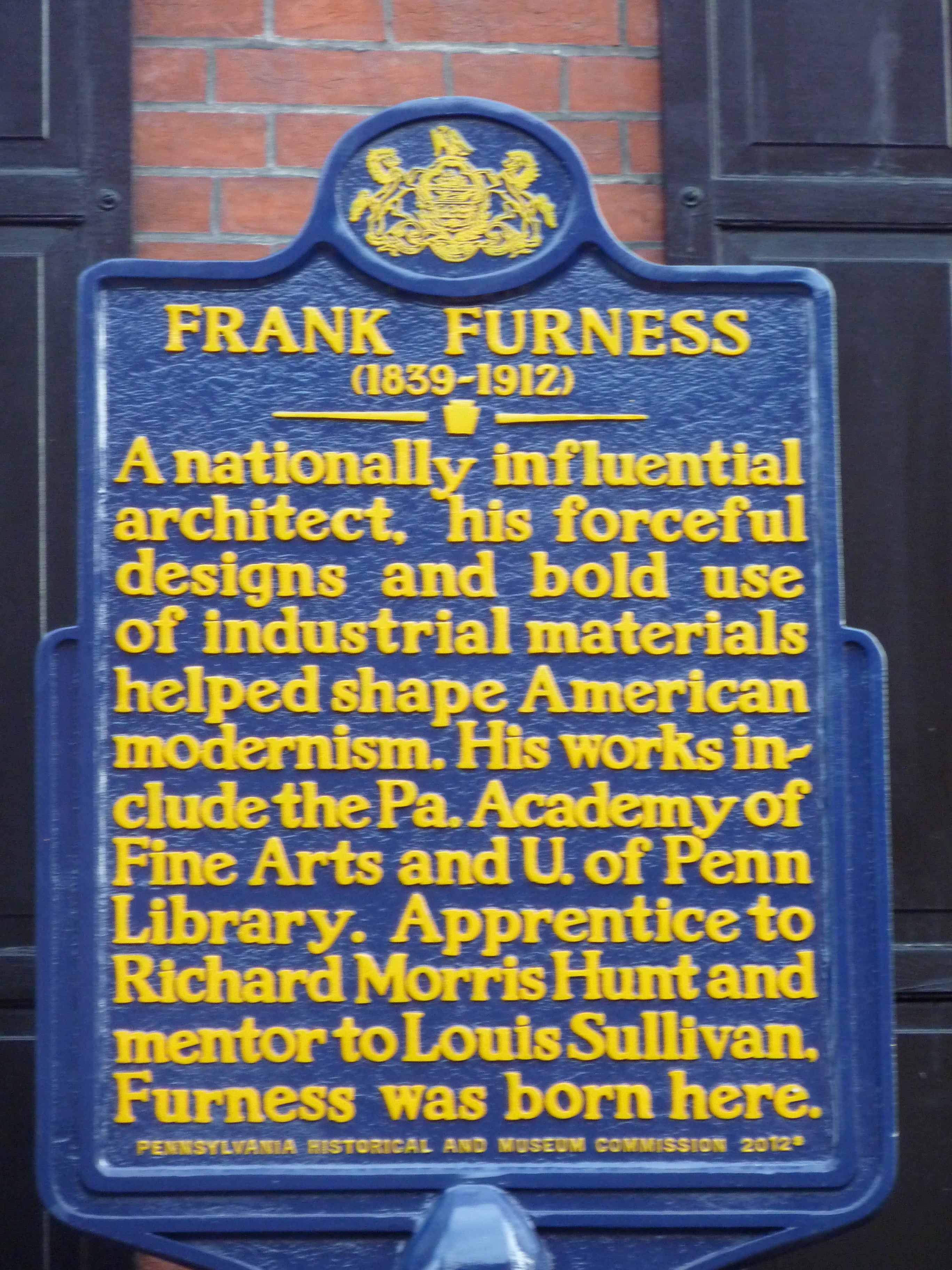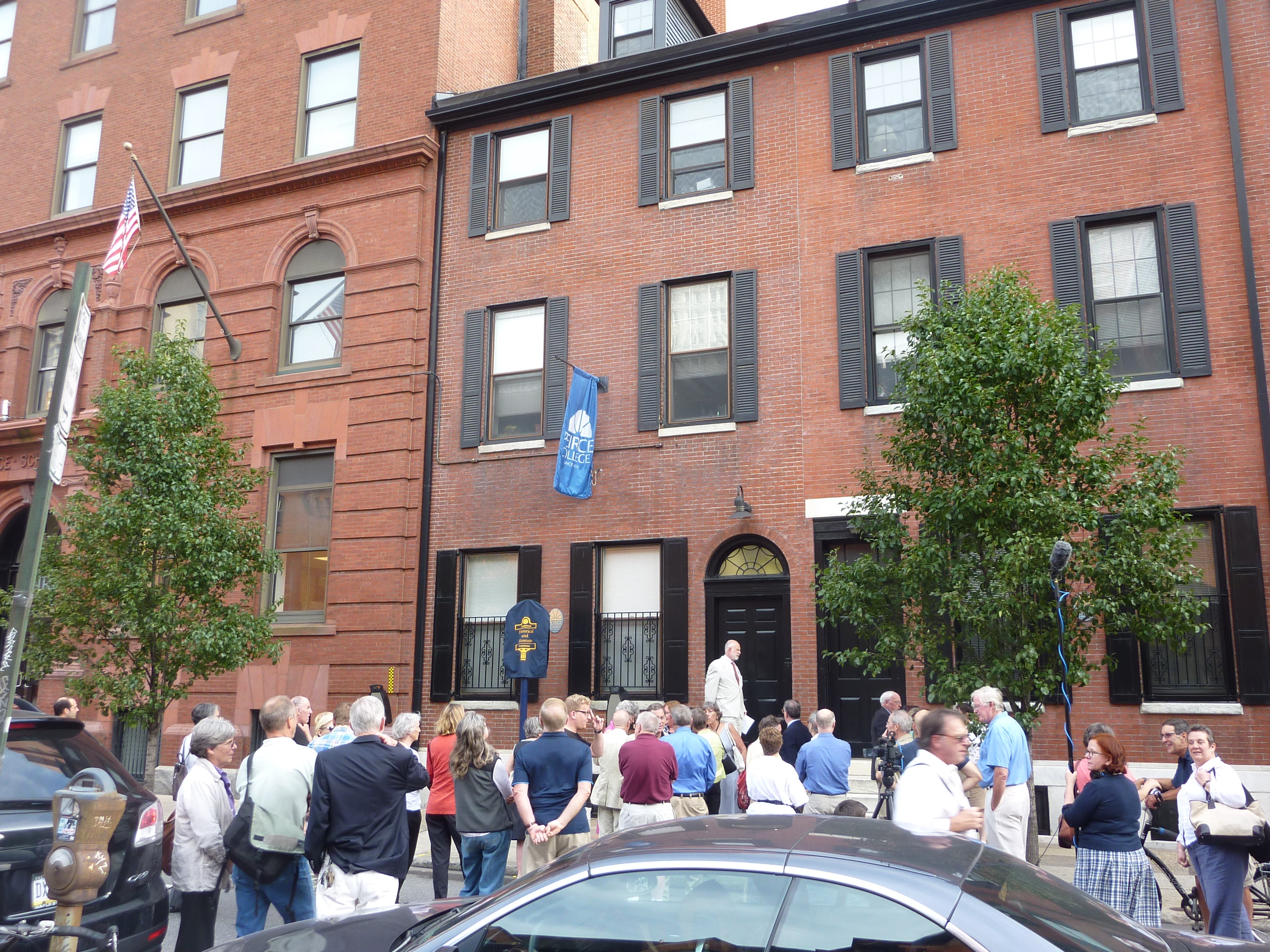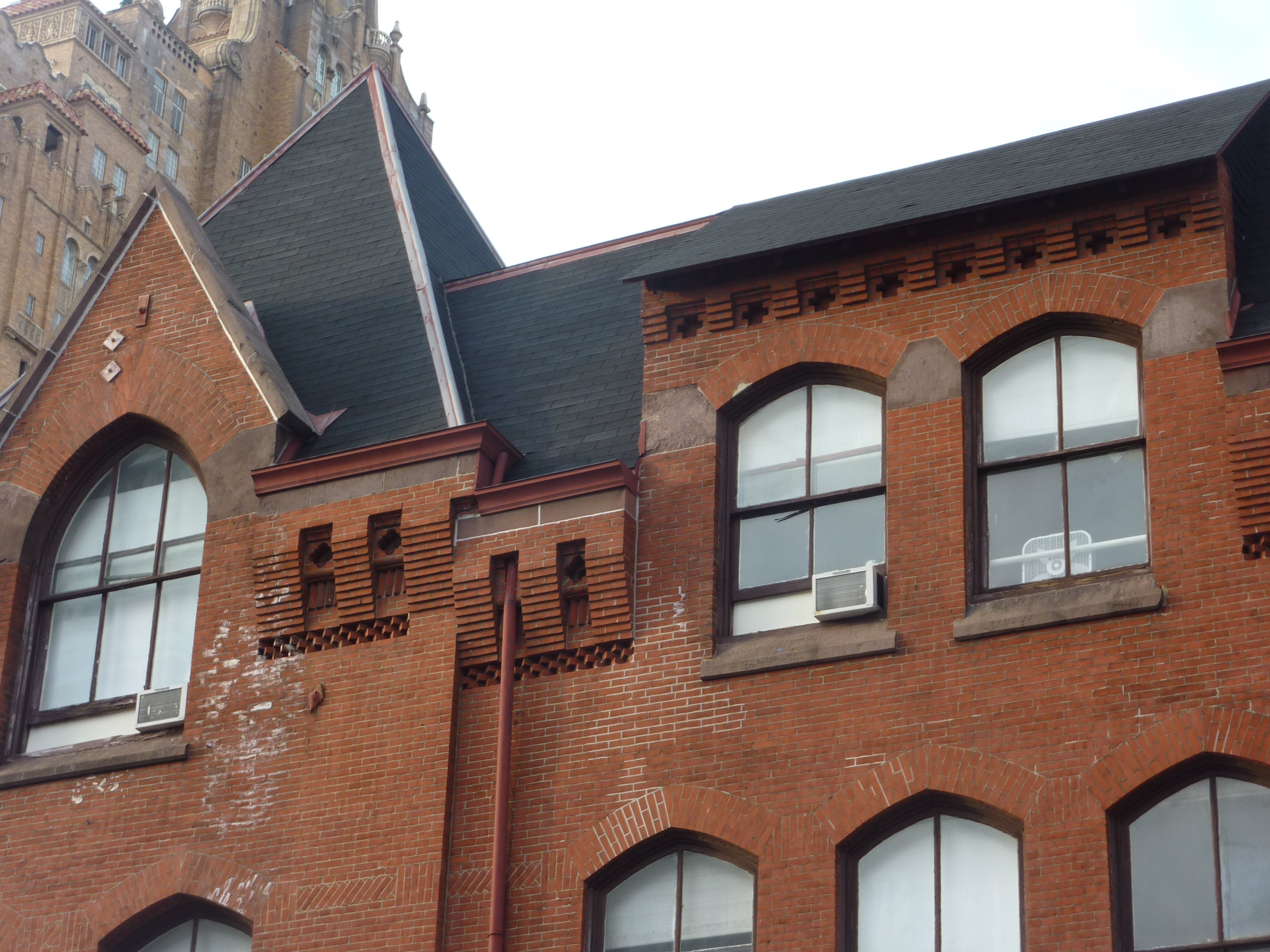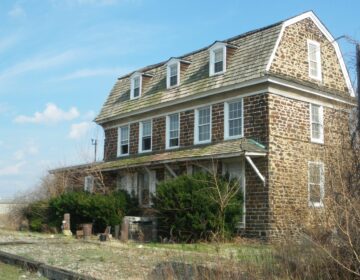New historical marker commemorates Frank Furness
Some 200 fans of Frank Furness, arguably the greatest of Philadelphia architects, clustered outside his home last Friday afternoon to witness the unveiling — amazing to think that one doesn’t already exist — of a state historical marker commemorating his accomplishments.
This year is the 100th anniversary of Furness’ death; he was born in 1839 in the stately brick rowhouse at 1426 Pine Street. As a young adult he moved to New York to work in the atelier of the architect RIchard Morris Hunt — designer of the great Newport mansions, the Biltmore Estate, and the Metropolitan Museum of Art — and then served as a soldier in the Civil War. Eventually, Furness returned to live in the Pine Street home, through 1873, with his wife and three children.
The building now belongs to Peirce College.
Before unveiling the sign, with the help of a Furness great-granddaughter, Nancy Townsend, Richard Sand, Commissioner of the Pennsylvania Historical & Museum Commission, noted how “poignant, beautiful and ironic” the marker is, poised in front of Furness’ birthplace and at the same time directly across from one of his creations, the Pennsylvania Institution for the Deaf and Dumb (1875), now used by the University of the Arts.
In his remarks, scholar Michael Lewis claimed that no other such sign in the United States echoes this situation.
Although the Commission is charged with awarding the markers, the state agency requires that in addition to a convincing case, applicants must demonstrate that they will be able to raise the funds for its fabrication and installation.
In this instance, three local institutions — The Athenaeum of Philadelphia, and the Philadelphia chapters of the Society of Architectural Historians and the American Institute of Architects — chipped in. Students of University of Penn professor David Brownlee contributed letters of support for the marker.
After the marker was unveiled, the festivities continued. A handful of members of the a capella group Orpheus Club assembled in front of the building to sing the “Rush Lancers,” a satirical ditty that resembled Gilbert & Sullivan squeezed through a Pythonesque filter. It was written by Furness himself and tells the tales of some of his fellow cavalry officers.
The club — the oldest extant men’s chorus in America — is about 200 vocalists strong, and one of the choristers on this sunny Friday was none other than PlanPhilly’s own Steven Ujifusa. And PlanPhilly is actually nestled in a Furness gem, the Duhring Wing (b. 1914-15) of the Fisher Fine Arts Library at Penn.
After the performance, celebrants moved into the Furness home and walked through a linking corridor to party out in the backyard, and to watch a preview of a short film on the honoree, the latest in a series of documentaries by Sam Katz for his “History Making Productions.“
As the party ended, Phil Jablon, an architectural photographer, stared around in disbelief. “I love Frank Furness — he’s my hero,” he said. “I can’t believe I’m in his house!!”
I was similarly touched — even if the crowds, the marker, the song, and the film didn’t begin to make up for the fact that so much of Furness’ work was demolished in the 1950s. Walking home, I noted that Furness was in the air as I spotted a sign announcing a new exhibit at the Library Company. Called “Frank Furness: Working on the Railroads,” it promises a comprehensive look at the architect’s train stations and depots.
It’s just the first of several upcoming examinations of his work and influence. A complete calendar of local events commemorating the Furness anniversary can be found here.
Contact the reporter at jgreco@planphilly.com and follow her on Twitter @joanngreco
WHYY is your source for fact-based, in-depth journalism and information. As a nonprofit organization, we rely on financial support from readers like you. Please give today.








